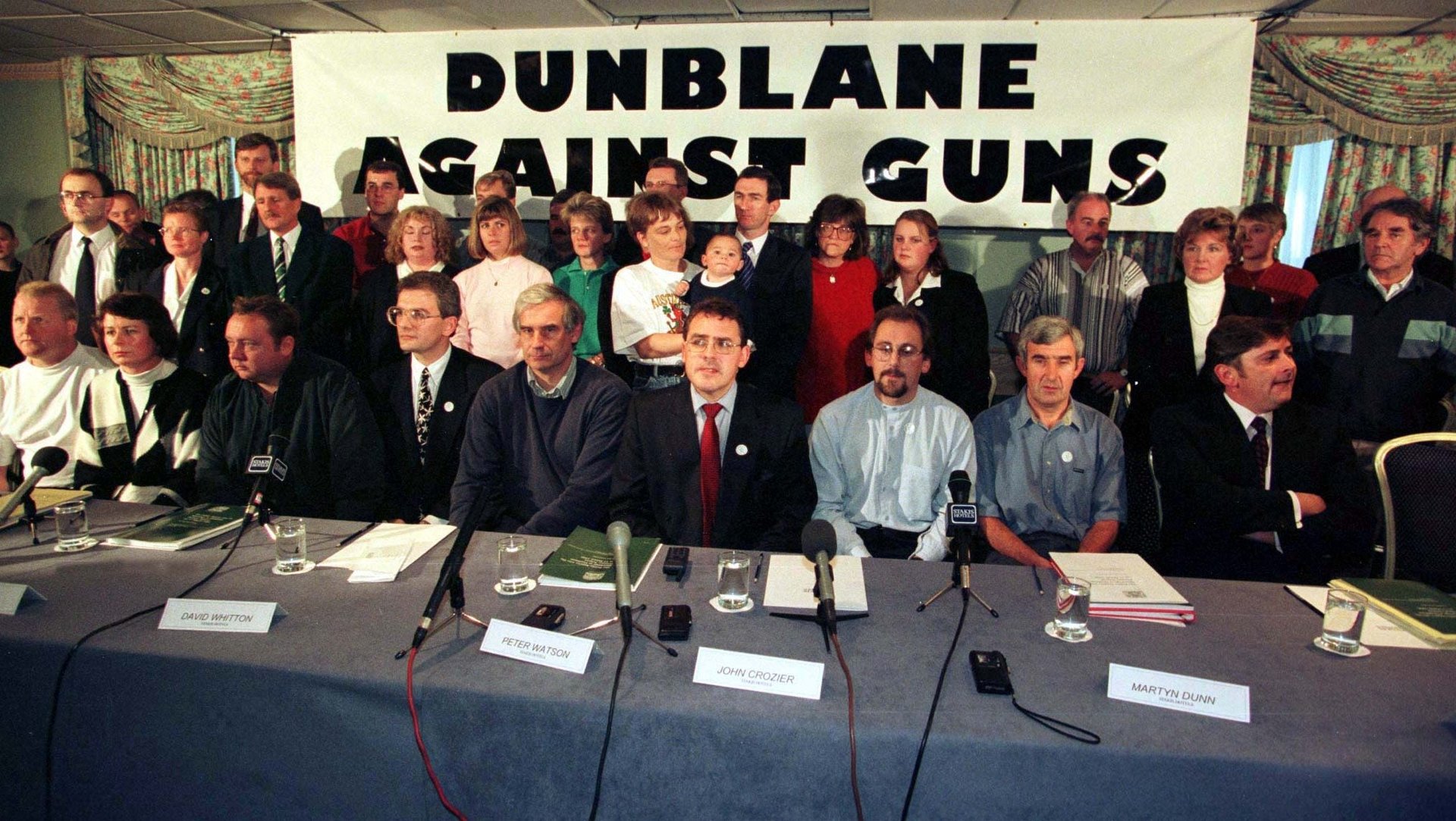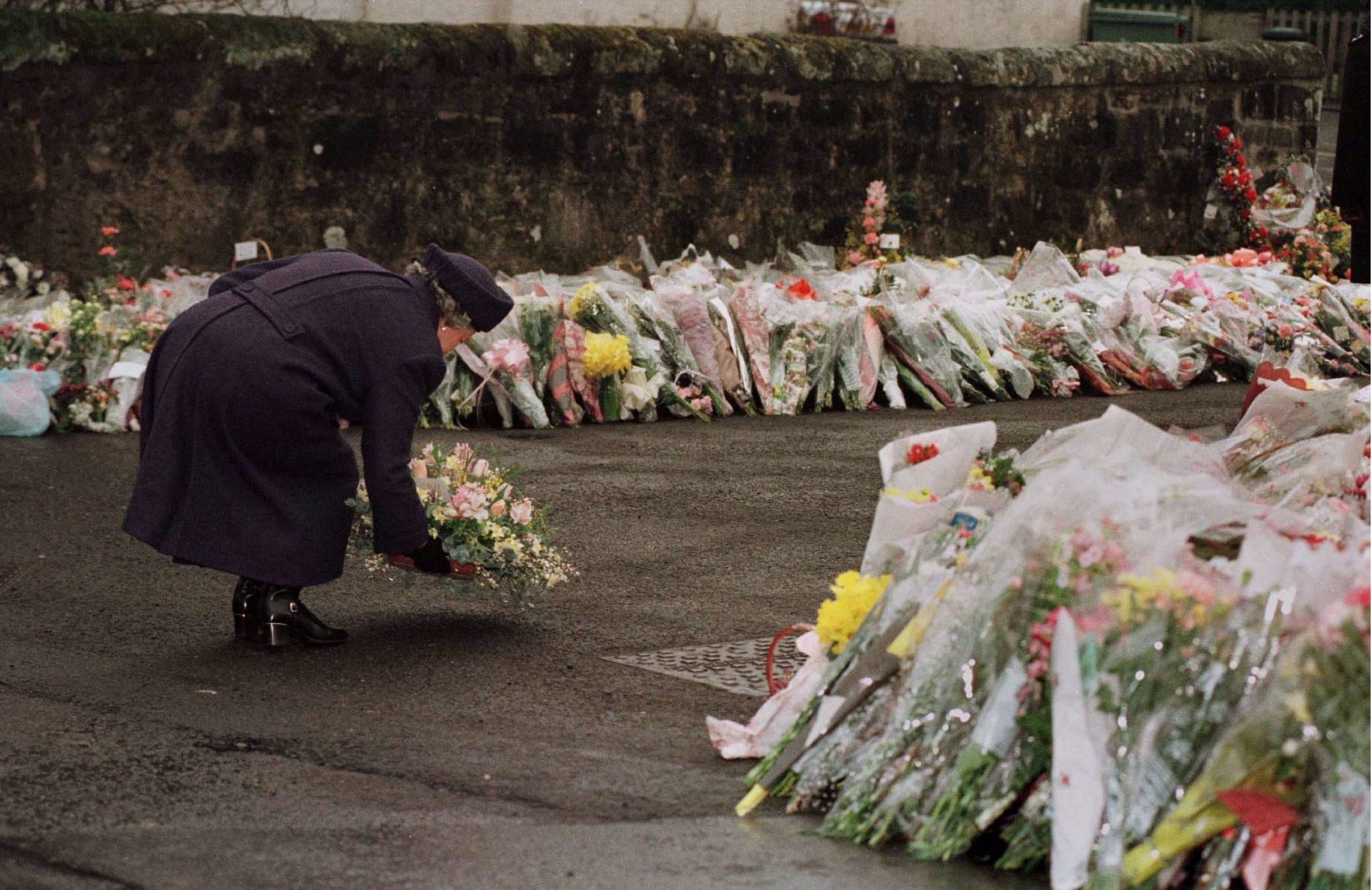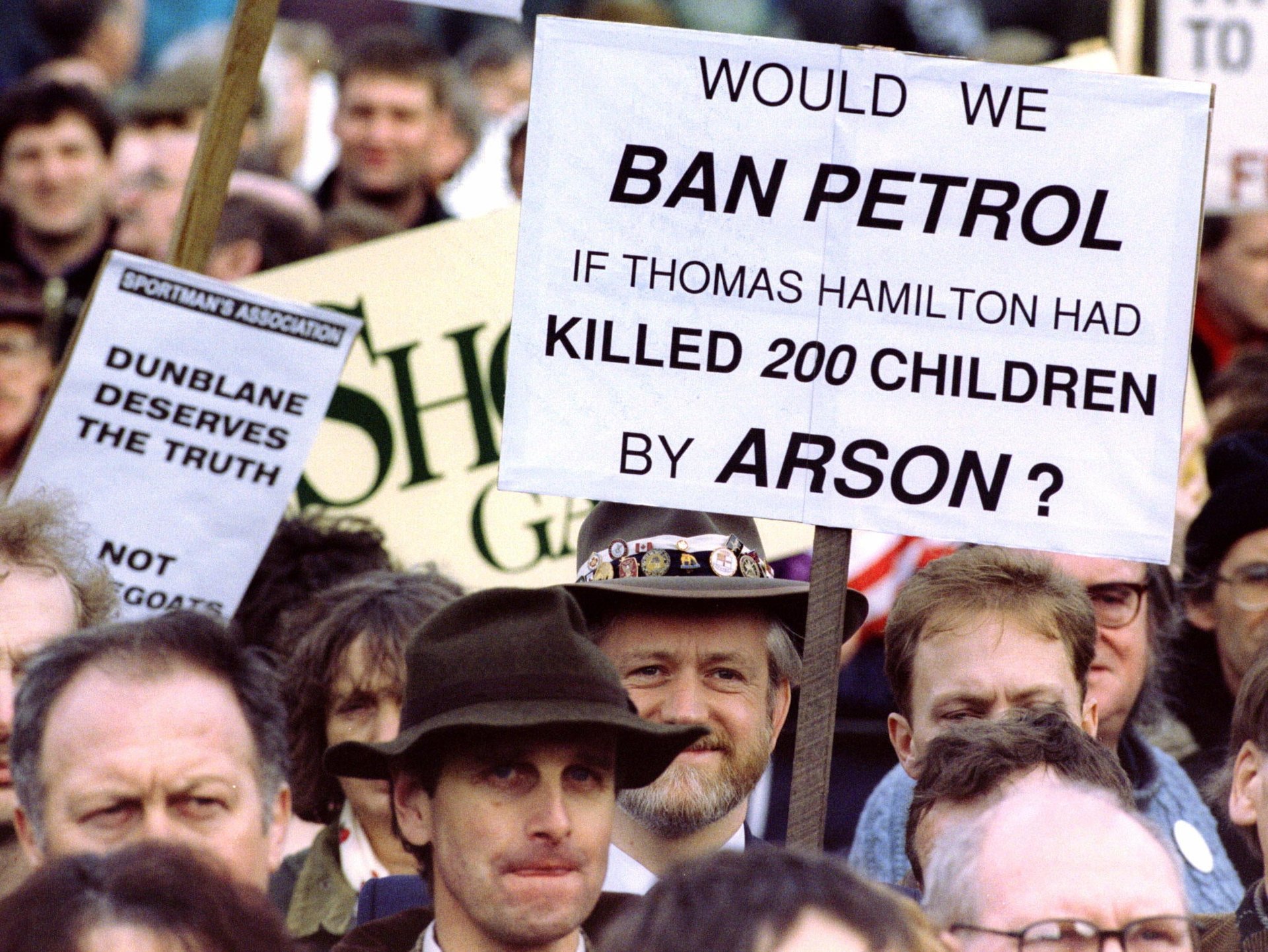Britain ended the horror of school shootings after one single massacre
On March 13, 1996, an ostracized former Boy Scout leader around whom rumors of pedophilia had swirled for years, walked into the gym of Dunblane Primary School and fired at children aged five and six gathered at a gym class.


On March 13, 1996, an ostracized former Boy Scout leader around whom rumors of pedophilia had swirled for years, walked into the gym of Dunblane Primary School and fired at children aged five and six gathered at a gym class.
In minutes, 15 children and one teacher were dead. Another child died later from gunshot wounds. At least 17 others were injured before the attack ended with Thomas Hamilton shooting himself. The Scottish town—and all of Britain—were plunged into mourning. The Queen came and knelt at the school. Teddy bears poured in from all over the world.
Columbine wouldn’t happen for another three years; Sandy Hook was over a decade away. The shooting at Marjorie Stoneman Douglas High School in Parkland, Florida, would not happen for two decades. Yesterday’s shooting of 20 people, mostly children, at an elementary school in Uvalde, Texas, was nearly 30 years away. For a brief moment, the mass school shooting was a British horror.
Eight days after the shooting, Britain’s parliament convened a tribunal headed by Lord W. Douglas Cullen, a senior Scottish judge at the time, to conduct a public inquiry into the shooting. It opened on May 29 in the Scottish town of Stirling, and sat for 26 days. The entire proceeding was open to the public and recorded in full in shorthand.

“One’s worst nightmare”
In the report Cullen submitted on Sept. 30, 1996 (pdf), he said he sought answers to two questions:
-What were the circumstances leading up to and surrounding the shootings at Dunblane Primary School on 13 March 1996?
-What should I recommend with a view to safeguarding the public against the misuse of firearms and other dangers which the investigation brought to light?
Hamilton had come armed with four handguns and 743 rounds of ammunition (pdf). He fired about 105 bullets, police experts testified. His attack came before school shootings had become something schools prepared for with drills and plans—and before they were routinely carried out by other students. In that innocent time, when the Dunblane school principal heard loud bangs from another part of the school, he thought it was building work that he hadn’t been told about. After a teacher burst into his office and told him what was happening, he he ran to the gym, where he witnessed “a scene of unimaginable carnage, one’s worst nightmare,” he told the inquiry later.
In his report, Cullen wrote that the safety of the public could be better ensured by focusing efforts on the sale and availability of guns, rather than on the fitness of a potential buyer. Looking at whether Hamilton would have been prevented from carrying out the shooting with stricter purchasing law, he concluded that, despite longstanding uneasiness over the shooter’s behavior, laws intended to exclude potentially dangerous gun buyers would be unlikely, on their own, to prevent a future massacre:
Despite the fact that there is room for improvement in the certification system I conclude that there are significant limitations in what can be done to exclude those who are unsuitable to have firearms and ammunition. There is no certain means of ruling out the onset of a mental illness of a type which gives rise to danger; or of identifying those whose personalities harbour dangerous propensities. On this ground alone it is insufficient protection for the public merely to tackle the individual rather than the gun.
Cullen recommended that the government either implement a system to disable handguns owned by individuals and keep them at sports clubs when they were not being used for sports purposes, or if that was not practical, consider banning multishot handguns.
Ban guns? Might as well ban cricket bats, then
Britain might not have had the cult of the Second Amendment—that twinning of gun ownership and the most cherished of American documents, along with a powerfully funded gun lobby in the shape of National Rifle Association—but it too had a culture of gun ownership and shooting for sport.

Britain’s gun lobby had taken action to limit discussions of gun law changes after an earlier mass shooting in 1987—though Britain did ban semi-automatic weapons after that attack—and sought to fend off a handgun ban, but was unsuccessful. In December 1997 the House of Commons voted by a wide margin for Labour Party legislation to effectively ban all handguns, a law that went even further than the ban proposed by Conservative prime John Major before he lost power in elections that year.
More than 160,000 handguns would have to be handed in. Gun owners and hunting aficionados weren’t happy. Among them was Prince Philip, Queen Elizabeth’s husband, who uttered a very English version of the objection that NRA members have voiced again and again.
“If a cricketer, for instance, suddenly decided to go into a school and batter a lot of people to death with a cricket bat, which he could do very easily, I mean are you going to ban cricket bats?” the Queen’s spouse said. (He later apologized after Dunblane families expressed anger over his comments.)
If not after Sandy Hook, then when?
For people nearly numbed by seeing mass shootings grow into an epidemic in the US over the past three decades, it seemed unthinkable at first that the shooting of 26 people, mostly first graders, at Sandy Hook school in Newton, Conn., in 2012 would not be a turning point. How could America possibly let such a thing happen again? But despite the endless deaths, gun culture in the US is a different beast. Less than 20% of people favor a handgun ban, and only a little over a third of people want gun laws to be stricter. Despite sorrow and outrage over these tragic school shootings, nothing has changed.
In Texas, where an 18-year-old man yesterday carried out the 27th school shooting this year in the US, gun laws have been relaxed in recent years.
It’s always possible that Britain could see such rampages again. Yet the fact that there appears to have been only one mass shooting since Dunblane, in 2010, suggests the legislation had its intended effect. That’s a credit to the Dunblane inquiry, and to the lawmakers who were persuaded by the grassroots campaigning of Dunblane parents—backed by a public revulsed by the massacre. The details of that day will never be forgotten by the parents whose lives were changed forever. But, unlike the parents of Columbine, or Newton, who have only seen their numbers swell in the US over the years, the Dunblane parents are a rarity. Their experience—and that of their children—hasn’t been suffered by other children and other parents in the UK.
I was in London at the time the Dunblane inquiry took place, and it stood out among other memories that punctuated the cultural moment Britain was living through that summer: Orange marches in Northern Ireland, Bridget Jones’s diary (the newspaper column, not the book or movie), mad cow panic. When there’s a school shooting in the US, I often think back to the summer of 1996, and our innocent shock that such a thing could happen. For young people in Britain, though, certainly those under 30, the details of the Dunblane shooting may be quite vague. The only thing they might know for sure happened in Dunblane was Andy Murray’s wedding in 2015—the tennis star was a fourth grader at the school at the time of the shooting—in the same cathedral from where the funeral of the 18 victims was broadcast live.
Their forgetfulness isn’t a shame. It’s a triumph for a country that understood immediately that a society that allows children to be shot in its schools is a society that is failing. Britain didn’t merely pay lip service to the idea that life— particularly the youngest of lives—matters. It did its best to make it so.